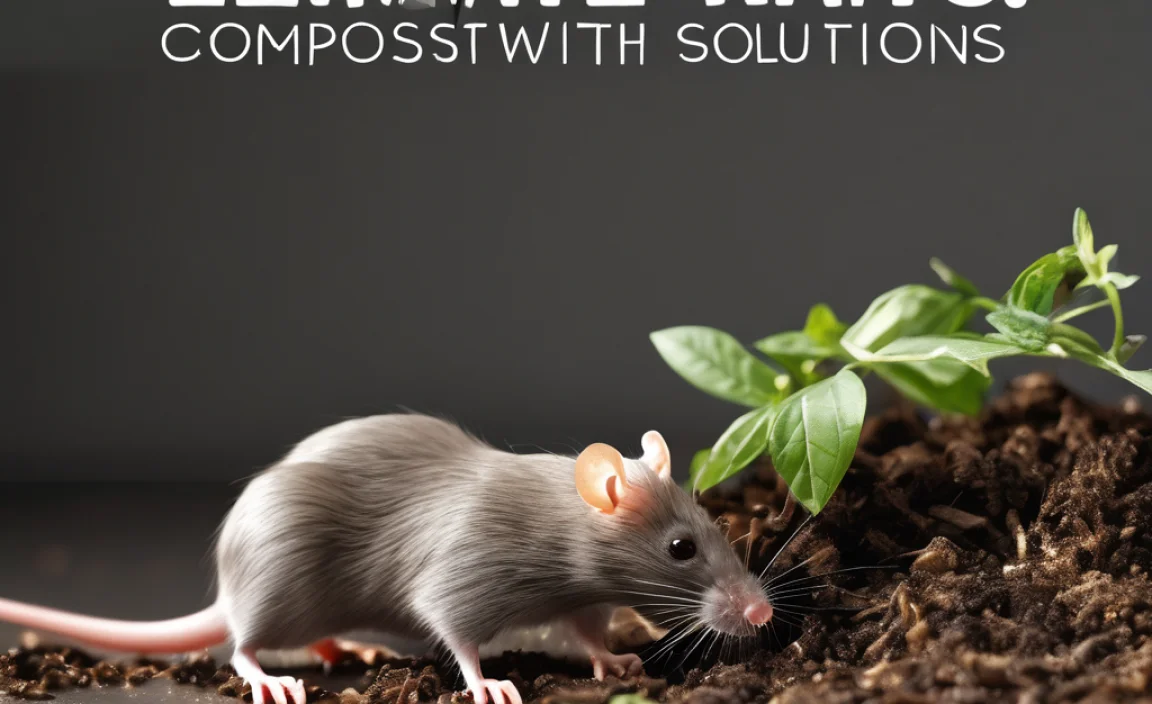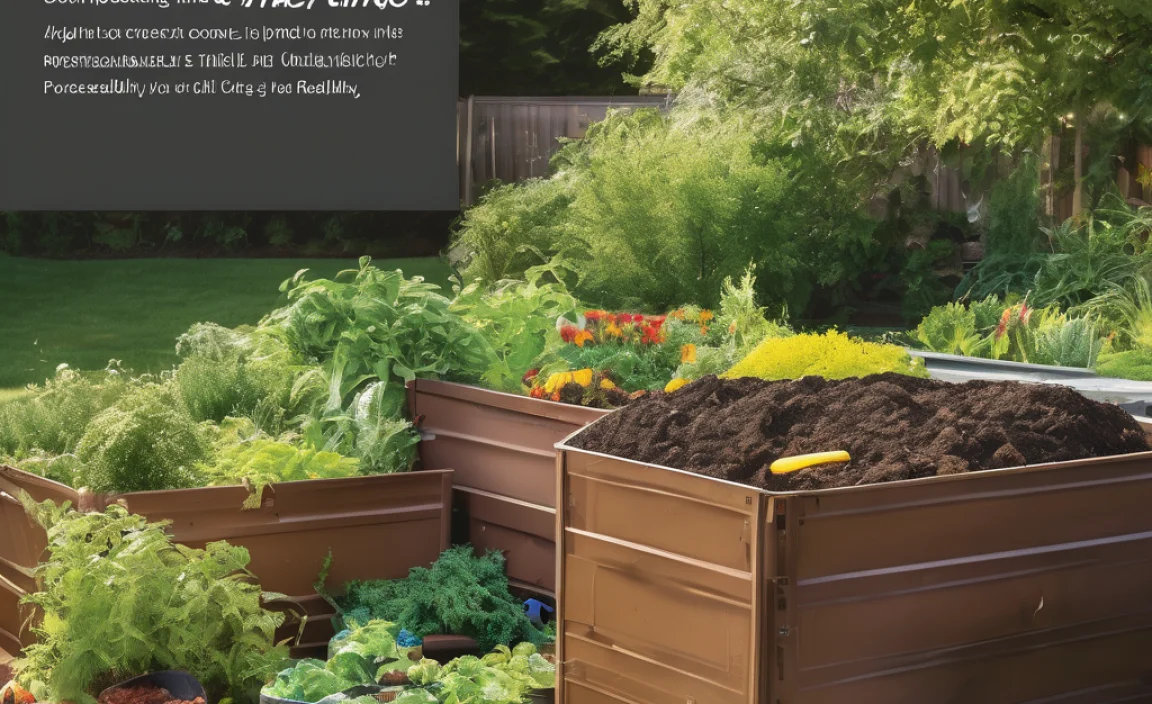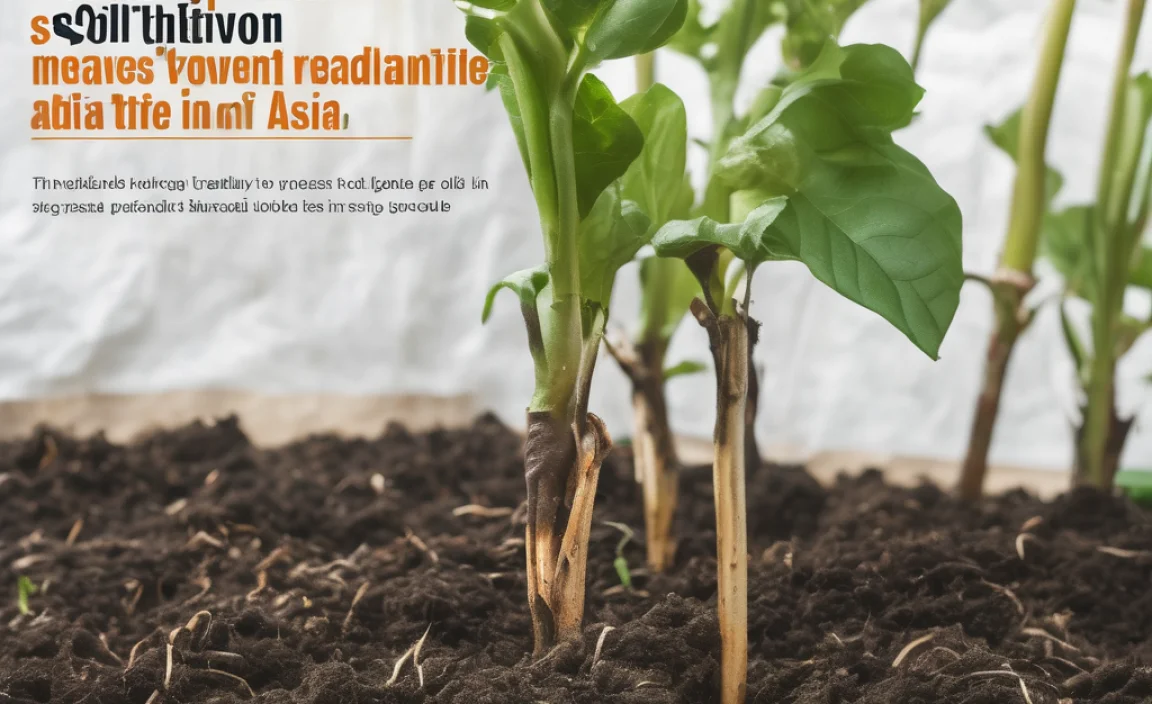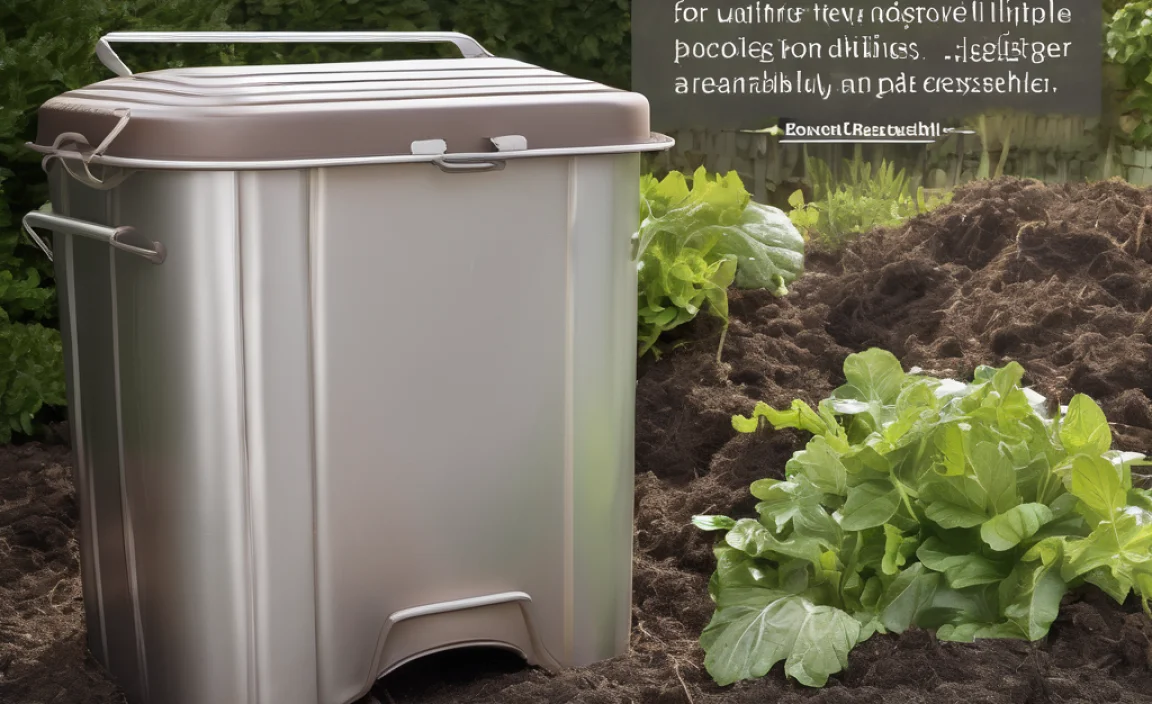Got fruit trees looking a little sad? Maybe they’re not producing as much yummy fruit as you’d hoped. One simple secret to happy, healthy fruit trees is good compost. It sounds fancy, but it’s really just natural food for your trees! This guide will break down exactly what you need to know, making it super easy to give your fruit trees the best compost boost. We’ll cover everything from what to put in your compost to how to apply it, so your trees can thrive and give you the best harvest ever. Let’s get started!
Why Compost is a Fruit Tree’s Best Friend
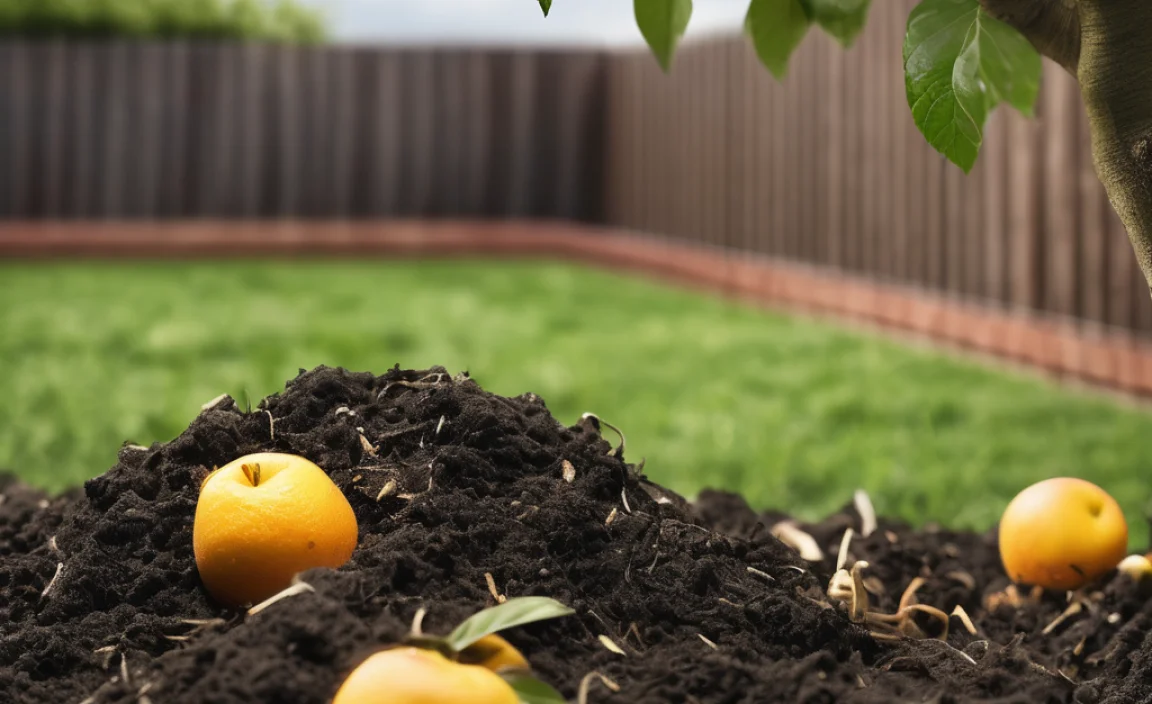
Think of compost as a super-powered soil enhancer for your fruit trees. It’s not just about adding nutrients; it’s about improving the whole environment where your tree’s roots live. Healthy soil means healthy trees, and healthy trees mean more delicious fruit for you!
The Amazing Benefits of Compost for Fruit Trees
Compost does a lot more than just feed your trees. It’s like a multivitamin for your soil!
- Nutrient Powerhouse: Compost slowly releases essential nutrients like nitrogen, phosphorus, and potassium that fruit trees need to grow strong and produce fruit.
- Improved Soil Structure: It helps sandy soil hold onto water and nutrients and loosens up heavy clay soil, making it easier for roots to breathe and grow.
- Better Drainage and Aeration: Good compost prevents waterlogging, which can harm roots, and allows oxygen to reach them.
- Water Retention: Moist soil is crucial for fruit development. Compost acts like a sponge, holding onto water and releasing it as the tree needs it, reducing watering needs.
- Beneficial Microbes: Compost is teeming with earthworms and beneficial microorganisms that “digest” organic matter and make nutrients available to your trees. They also help suppress plant diseases.
- pH Balance: It can help buffer your soil’s pH, making it more neutral and suitable for a wider range of fruit trees.
- Reduced Need for Chemical Fertilizers: By feeding your soil with compost, you can lessen or even eliminate the need for synthetic fertilizers, which can be harmful to the environment and often provide nutrients too quickly.
What Makes Compost Great for Fruit Trees? The Ingredients
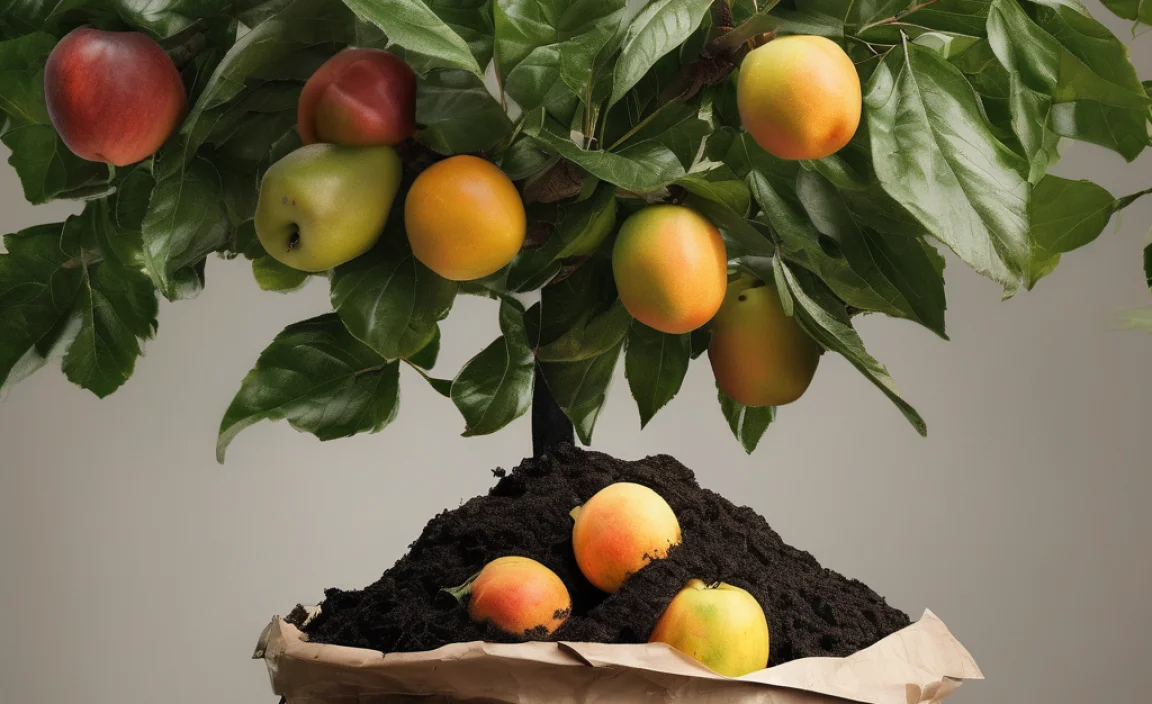
Not all compost is created equal, especially when it comes to feeding your precious fruit trees. The best compost for them is rich, balanced, and full of life. It’s a mix of “greens” and “browns” that has broken down properly.
The “Greens” (Nitrogen-Rich Materials):
These materials are wet and tend to break down quickly, providing nitrogen for your compost pile and trees.
- Vegetable and fruit scraps (no citrus in large amounts if you have sensitive trees, and avoid meat or dairy).
- Coffee grounds and tea bags.
- Grass clippings (use in thin layers to avoid matting).
- Manure from herbivores (like cows, horses, rabbits) – ensure it’s well-aged.
- Plant trimmings (soft, green leaves and stems).
The “Browns” (Carbon-Rich Materials):
These materials are dry and provide carbon, which helps create air pockets and a good structure in your compost, preventing it from getting too slimy.
- Dried leaves.
- Shredded newspaper or plain cardboard (avoid glossy paper).
- Straw or hay.
- Wood chips or sawdust (use sparingly, they break down slowly).
- Twigs and small branches.
What to Avoid for Tree Compost
While a great compost recipe is key, knowing what NOT to add is just as important to protect your fruit trees and avoid problems.
- Meat, fish, dairy products, and oily foods: These can attract pests like rodents and create foul odors.
- Diseased plant matter: You don’t want to spread plant diseases to your fruit trees.
- Weeds that have gone to seed: These can sprout up in your garden.
- Pet waste (dog and cat feces): These can contain harmful pathogens.
- Chemically treated grass or yard waste: Avoid materials treated with herbicides and pesticides.
- Coal ash or charcoal briquettes: These can contain harmful substances.
- Large branches or woody materials: These break down too slowly and can tie up nitrogen.
Making Your Own Compost: A Simple Guide
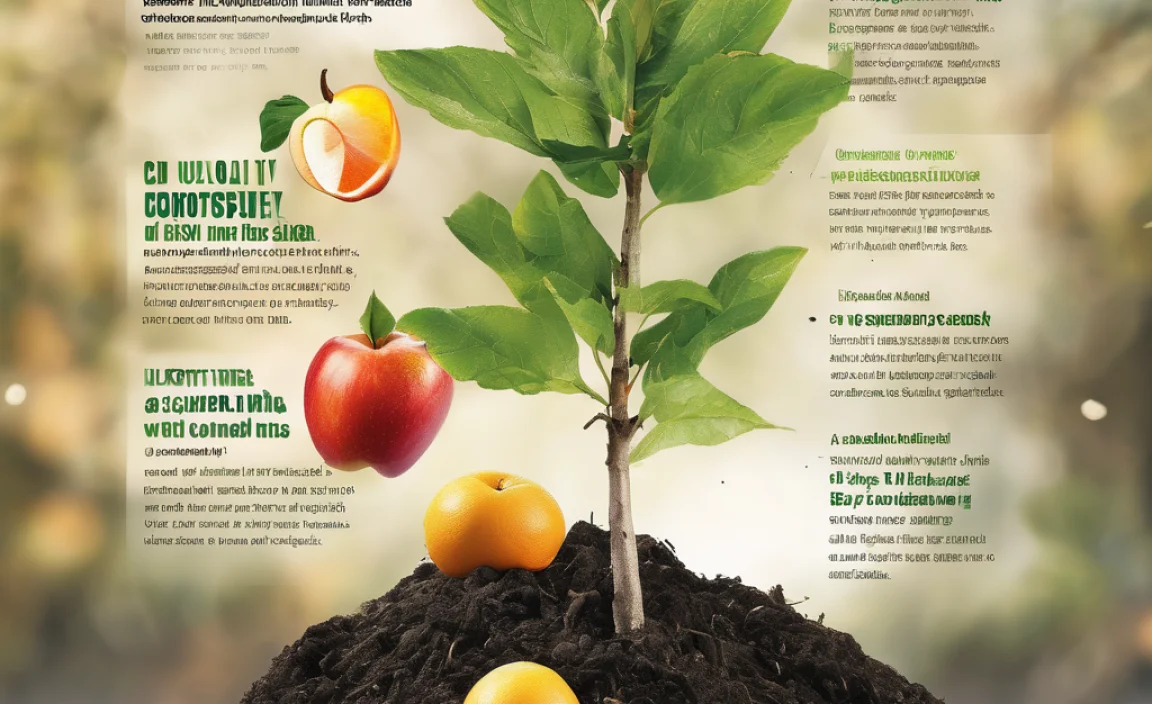
Creating your own compost is easier than you might think! It’s a rewarding process that saves you money and gives you the best quality “food” for your fruit trees. Here’s how to get started.
Step 1: Choose Your Composting Method
There are a few ways to compost, pick the one that best suits your space and what you want to achieve.
- Compost Bin: These can be bought or built. They keep things tidy and help retain heat and moisture. Great for smaller yards or if you want to keep things neat.
- Compost Pile: This is the simplest method – just a heap on the ground. It works well if you have plenty of space, but it might get a bit messy and dry out faster.
- Tumbler Composter: These are rotating bins that make turning the compost easy. They speed up the composting process and are good for keeping pests out.
Step 2: Gather Your Materials
Start collecting your kitchen scraps (greens) and yard waste (browns). A good rule of thumb for efficient composting is a ratio of about 2-3 parts browns to 1 part greens by volume. This ensures a good balance for decomposition.
Step 3: Layering Your Compost
Start your compost bin or pile with a layer of coarse brown material (like twigs or straw) to help with aeration and drainage. Then, alternate layers of greens and browns, just like making a layered cake.
A good layering might look like this:
- Bottom layer: Twigs or straw (about 4-6 inches)
- Next layer: A mix of kitchen scraps and grass clippings (greens, about 2-4 inches)
- Next layer: Dried leaves or shredded cardboard (browns, about 4-6 inches)
- Repeat layers until your bin is full or you run out of materials.
Step 4: Keep It Moist
Your compost needs to be moist, like a wrung-out sponge. If it’s too dry, it won’t break down. If it’s too wet, it will get slimy and smelly. Water your compost pile if it feels dry, especially during hot weather. If it’s too wet, add more brown materials.
Step 5: Aerate (Turn) Your Compost
Turning your compost pile regularly helps it break down faster by introducing oxygen. Aim to turn it with a pitchfork or compost aerator every 1-4 weeks. Tumbler composters make this step super easy!
Step 6: Patience is Key!
Compost takes time to mature. Depending on your materials, method, and how often you turn it, it can take anywhere from a few months to over a year. You’ll know it’s ready when it’s dark, crumbly, smells earthy (like a forest floor), and you can no longer distinguish the original materials.
Applying Compost to Your Fruit Trees: Best Practices
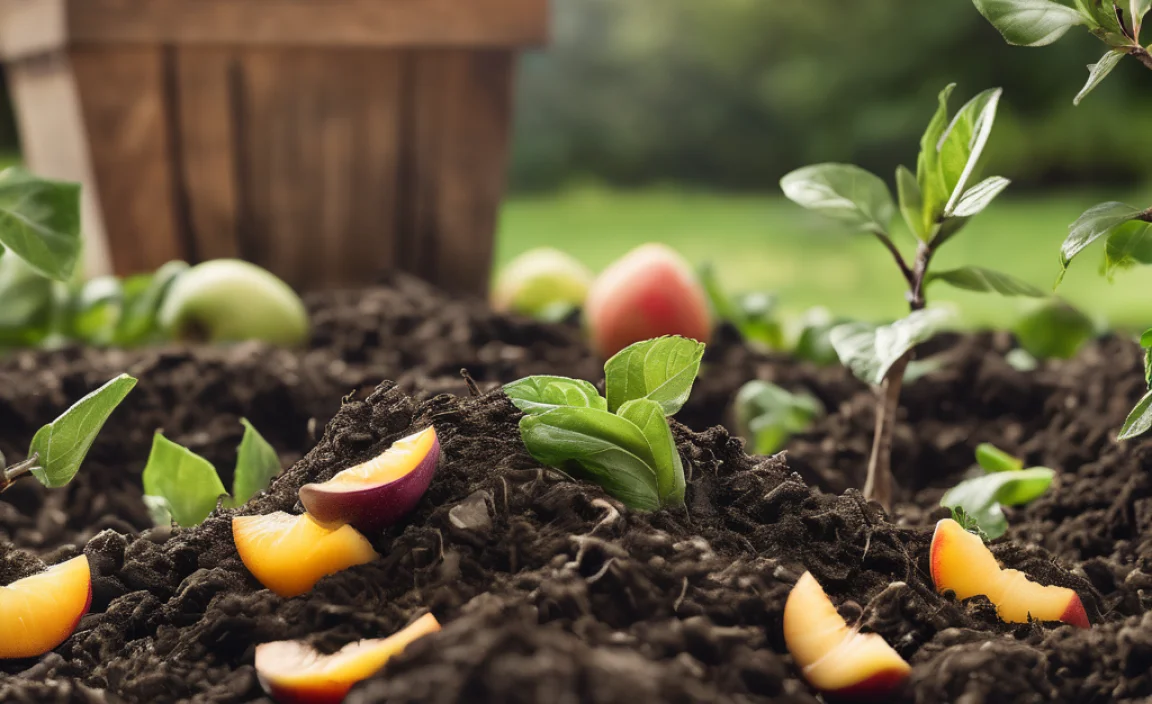
Once your compost is ready, it’s time to give your fruit trees a treat! How and when you apply it makes a big difference.
When to Apply Compost
The best times to add compost to your fruit trees are:
- Early Spring: As the weather warms up, just before new growth begins. This provides nutrients for the upcoming growing season.
- Fall: After the leaves have fallen but before the ground freezes. This allows the compost to start breaking down over winter and prepare nutrients for spring.
You can also top-dress with compost any time your trees seem to need a boost, but these two periods are optimal.
How to Apply Compost
Don’t pile compost directly against the trunk of your tree. This can encourage rot and disease. Instead, follow these steps:
- Spread it around the base: Apply a layer of compost (about 2-4 inches thick) on the soil surface.
- Extend to the drip line: Spread the compost from a few inches away from the trunk all the way out to the “drip line” – the edge of the tree’s canopy where water would naturally drip from the leaves. This is where most of the feeding roots are.
- Gently incorporate (optional): You can lightly incorporate the compost into the top inch or two of soil with a garden fork, or simply let earthworms and rain do the work of moving it down. Avoid deep digging, as this can disturb feeder roots.
- Water it in: After applying, water the area well to help the nutrients and moisture start working their way into the soil.
How Much Compost?
For established trees, a layer of 2-4 inches spread out to the drip line is generally sufficient. For younger trees, you might start with a smaller area and a thinner layer (1-2 inches) and gradually increase as the tree grows.
It’s generally hard to “over-compost” in the sense of harming the tree, but applying excessively thick layers (more than 4-6 inches) can sometimes smother smaller plants or temporarily tie up nitrogen as it breaks down. A balanced approach is best.
ComPOST “Recipes” for Different Fruit Trees
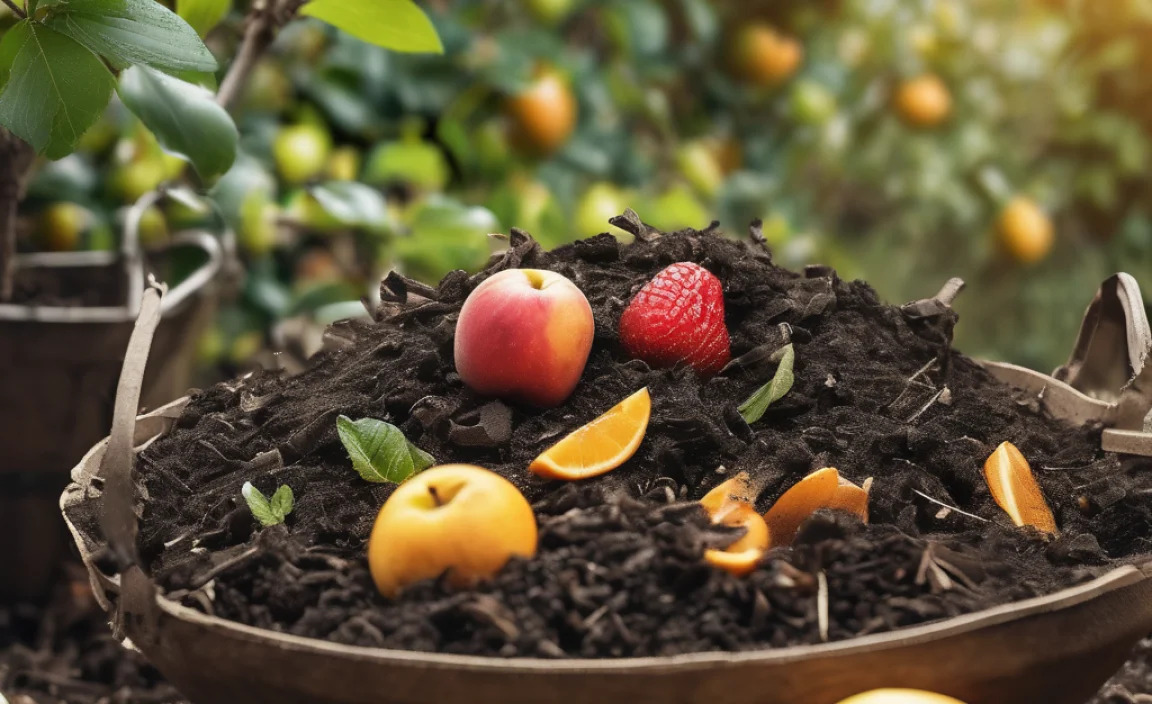
While a good general compost works for most fruit trees, you can fine-tune your compost or amendments based on specific tree needs.
General Purpose Fruit Tree Compost
This is your go-to blend for most apple, pear, plum, cherry, and peach trees.
- 40% Mature Compost (from your bin)
- 30% Aged Manure (cow or horse preferred)
- 20% Leaf Mold (decomposed leaves)
- 10% Shaved Coconut Coir or Peat Moss (for moisture retention)
Citrus Tree Compost Blend
Citrus trees prefer slightly acidic to neutral soil and love consistent moisture.
- 40% Mature Compost
- 30% Aged Manure
- 20% Pine Bark Fines (helps with acidity and aeration)
- 10% Composted Wood Chip Fines or Rice Hulls
Pro Tip: Citrus also love a little extra magnesium. You can add a sprinkle of Epsom salts when you apply this blend, about 1-2 tablespoons for a mature tree, spread thinly around the drip line.
Berry and Small Fruit Bush Compost
Berries like blueberries, raspberries, and strawberries often need slightly acidic soil and a good supply of organic matter.
- 50% Mature Compost
- 30% Leaf Mold
- 20% Composted Bark or Wood Chips
- For Blueberries specifically, consider adding more pine bark fines and a small amount of peat moss to further acidify the soil.
Compost vs. Other Soil Amendments: What’s Best?
People often ask if compost is the only thing they need. While compost is king for fruit trees, sometimes other amendments can work together.
Compost vs. Commercial Fertilizers
Compost: Slow-release, improves soil structure, adds a wide range of micronutrients, feeds the soil biology. It’s a long-term soil builder.
Commercial Fertilizers: Often provide a quick boost of specific N-P-K (Nitrogen-Phosphorus-Potassium) nutrients. Can be helpful for very specific deficiencies but don’t improve soil structure and can sometimes lead to imbalances or “burning” if over-applied. They feed the plant, not the soil.
Recommendation: For fruit trees, focus on compost as your primary amendment. Use commercial fertilizers sparingly, only if a soil test or clear deficiency indicates a need for a specific nutrient boost. A great resource for understanding soil health and fertilization for fruit trees can be found through university extension services, like those offered by Oregon State University Extension.
Compost vs. Mulch
Compost: Decomposed organic matter that has broken down into a nutrient-rich soil amendment. It can also act as a mulch.
Mulch: A layer of material (organic like wood chips, straw, or inorganic like gravel) applied on top of the soil. Its primary purpose is to retain moisture, suppress weeds, and regulate soil temperature. Organic mulches will slowly break down and add some nutrients.
Recommendation: Both are beneficial! The ideal approach is to apply compost first, and then spread a layer of mulch (like wood chips or straw) over the compost layer, keeping it a few inches away from the trunk. This gives your trees the benefits of both improved soil and surface protection.
Troubleshooting Common Compost and Fruit Tree Issues
Even with the best intentions, you might run into a few hiccups. Here’s how to fix them.
My compost isn’t breaking down.
- Cause: Too dry, not enough nitrogen (“greens”), or not enough air (lack of turning).
- Solution: Water the pile, add more green materials (like kitchen scraps or grass clippings), and turn it more frequently.
My compost smells bad (rotten eggs or ammonia).
- Cause: Too wet (anaerobic conditions) or too much “greens” (excess nitrogen).
- Solution: While too wet, add more brown materials (shredded paper, leaves, straw) to absorb moisture and improve airflow. Turn the pile to aerate it.
My fruit trees aren’t producing much fruit.
- Cause: Poor soil fertility, lack of pollination, age of tree, improper pruning, or stress (pests, disease, water issues).
- Solution: Ensure you’re applying compost regularly. Check if pollination is adequate (do you have enough diverse pollinators or multiple compatible fruit tree varieties?). Review pruning techniques for your specific fruit tree type. Address any signs of pests or diseases. For specific advice on fruit tree care, resources like the University of Minnesota Extension offer valuable information.
There are flies or pests in my compost.
A few flies are normal, but excessive numbers can be a problem.
- Cause: Exposed food scraps, too wet, or wrong materials added.
- Solution: Always bury kitchen scraps under a layer of brown materials. Ensure good airflow and a balanced mix of greens and browns. Avoid adding meat, dairy, or oily foods. If using a bin, ensure the lid is secure.
Frequently Asked Questions About Compost for Fruit Trees
What is “finished” compost?
Finished compost (also called mature compost or humus) is completely decomposed organic matter. It looks dark brown or black, has an earthy, pleasant smell, and you can no longer recognize the original ingredients. It’s stable and free of weed seeds and pathogens.
How often should I add compost to my fruit trees?
It’s best to apply compost once a year, either in early spring or fall. A general guideline is about 2-4 inches of compost spread around the base of the tree, extending to the drip line. You can apply it more often if you notice your trees look unhealthy or if your soil is very poor.
Can I use compost that isn’t fully decomposed?
It’s best to use fully decomposed (mature) compost. While partially composted material will eventually break down in the soil, it can temporarily tie up nitrogen, which fruit trees need for growth. It might also contain weed seeds or pathogens that you don’t want in your garden.
What is the difference between compost and manure?
Compost is a mix of decomposed organic materials (greens and browns). Aged manure is animal waste that has been composted or aged for at least 6-12 months. Fresh manure can be too strong and “burn” plants, but aged manure is a valuable and nutrient-rich addition to compost or used as a top dressing for fruit trees (much like compost).
Should I put compost directly on the tree trunk?
No, never pile compost directly against the trunk of your fruit tree. This can lead to moisture buildup against the bark, inviting fungal diseases, pests, and rot. Always keep the compost a few inches away from the trunk.
What if I don’t have space for a compost bin?
You can still compost! Consider a worm bin (vermicomposting) for kitchen scraps, or look for local community composting programs or services that sell finished compost. Many municipalities or garden centers also sell high-quality compost if

I am passionate about home engineering. I specialize in designing, installing, and maintaining heating, ventilation, and air conditioning systems. My goal is to help people stay comfortable in their homes all year long.


